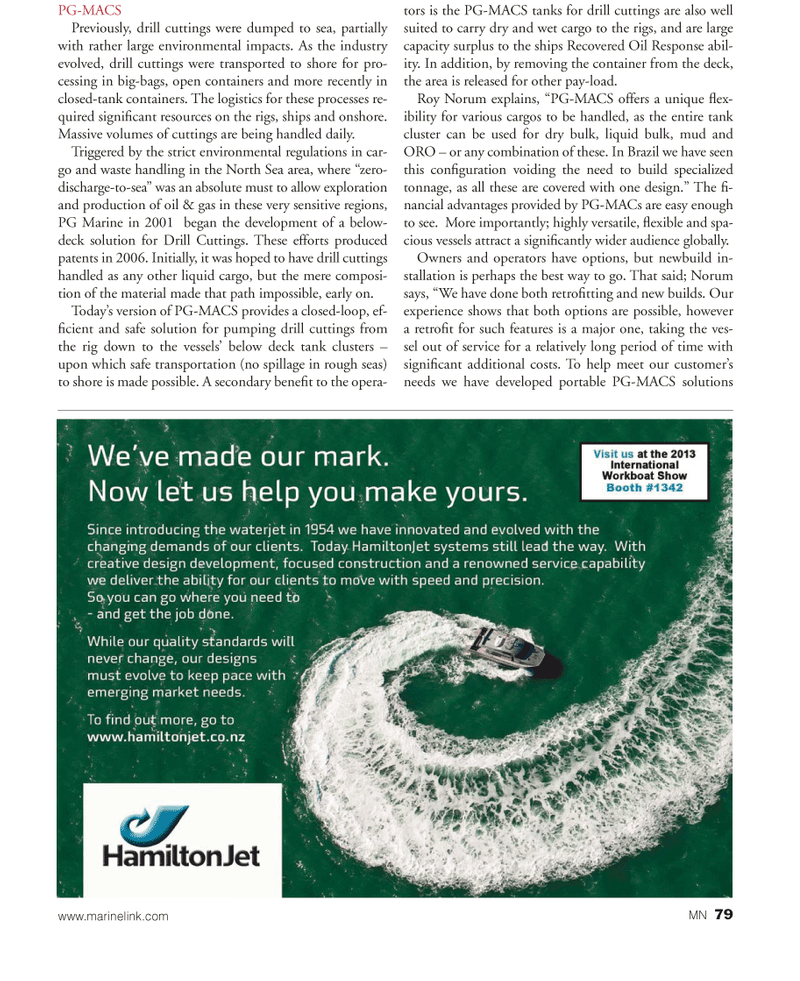
Page 79: of Marine News Magazine (September 2013)
Workboat Annual
Read this page in Pdf, Flash or Html5 edition of September 2013 Marine News Magazine
PG-MACS Previously, drill cuttings were dumped to sea, partially with rather large environmental impacts. As the industry evolved, drill cuttings were transported to shore for pro- cessing in big-bags, open containers and more recently in closed-tank containers. The logistics for these processes re- quired signi? cant resources on the rigs, ships and onshore. Massive volumes of cuttings are being handled daily. Triggered by the strict environmental regulations in car- go and waste handling in the North Sea area, where zero- discharge-to-sea? was an absolute must to allow exploration and production of oil & gas in these very sensitive regions, PG Marine in 2001 began the development of a below- deck solution for Drill Cuttings. These efforts produced patents in 2006. Initially, it was hoped to have drill cuttings handled as any other liquid cargo, but the mere composi- tion of the material made that path impossible, early on.Todays version of PG-MACS provides a closed-loop, ef- ? cient and safe solution for pumping drill cuttings from the rig down to the vessels below deck tank clusters ? upon which safe transportation (no spillage in rough seas) to shore is made possible. A secondary bene? t to the opera- tors is the PG-MACS tanks for drill cuttings are also well suited to carry dry and wet cargo to the rigs, and are large capacity surplus to the ships Recovered Oil Response abil- ity. In addition, by removing the container from the deck, the area is released for other pay-load. Roy Norum explains, PG-MACS offers a unique ? ex- ibility for various cargos to be handled, as the entire tank cluster can be used for dry bulk, liquid bulk, mud and ORO ? or any combination of these. In Brazil we have seen this con? guration voiding the need to build specialized tonnage, as all these are covered with one design.? The ? -nancial advantages provided by PG-MACs are easy enough to see. More importantly; highly versatile, ? exible and spa- cious vessels attract a signi? cantly wider audience globally. Owners and operators have options, but newbuild in- stallation is perhaps the best way to go. That said; Norum says, We have done both retro? tting and new builds. Our experience shows that both options are possible, however a retro? t for such features is a major one, taking the ves- sel out of service for a relatively long period of time with signi? cant additional costs. To help meet our customers needs we have developed portable PG-MACS solutions MN 79www.marinelink.com MN Sept2013 Layout 66-81.indd 798/29/2013 5:20:56 PM

 78
78

 80
80
